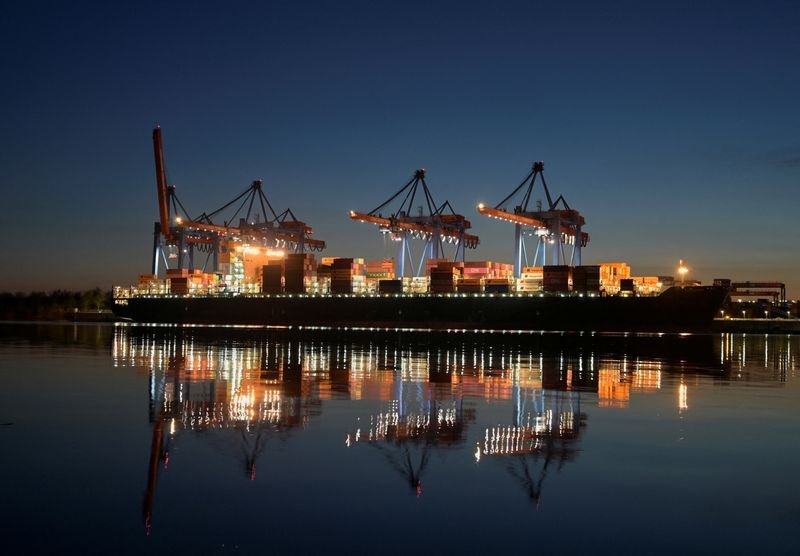A new wave of uncertainty has begun to rise over Europe’s economy. With growing talk in Washington of placing a 30 percent tariff on European goods, many across the continent are bracing for a serious hit to trade, jobs, and long-standing business relationships with the United States.
While it has not been officially confirmed, statements from key political figures in the US suggest that such a tariff could be part of a broader plan to protect American industries and reduce the trade gap with Europe. If implemented, the policy would likely affect cars, machinery, luxury items, and other major European exports.
For Europe, which has long relied on export-driven growth, the idea of a steep US tariff is not just a short-term challenge — it could force an entire shift in how its economies function.

Why This Matters to Everyday People
When we talk about tariffs, it might sound like something that only concerns politicians and trade experts. But the reality is much closer to home. Tariffs act like taxes on imported goods. So, if a car built in Germany is suddenly hit with a 30 percent tariff when sold in the United States, its price goes up. That makes it harder to sell. Over time, fewer cars get shipped. Factories slow down. People lose jobs.
The same happens across other industries. From French wines to Italian fashion, and from Spanish electronics to Swedish furniture, European products become more expensive for American consumers. That means fewer orders, slower production, and rising uncertainty for thousands of businesses that depend on global trade.
According to early estimates by European trade officials, such a tariff could cost the continent billions in export revenue. It could also lead to retaliatory tariffs, where European countries respond by placing their own fees on American goods, further deepening the divide.
For workers on both sides of the Atlantic, this is a lose-lose situation. Factories in Germany could scale back production. Farmers in France could lose contracts. Shipping ports in the Netherlands might see less traffic. And small businesses that rely on trade — from logistics firms to packaging providers — could feel the pain just as deeply.
An Export Model Under Pressure
For decades, Europe has built much of its economic success on exporting high-quality products to the rest of the world. From cars and airplanes to medicines and luxury brands, Europe’s strength has been its ability to compete globally through innovation, quality, and reliability.
But if the US market, one of its biggest customers, becomes harder to access, Europe’s export model will be tested like never before.
Germany, for example, sends over 10 percent of its total exports to the United States. France and Italy are not far behind. Many of these exports come from industries that already face tough competition from Asia and other rising economies. A 30 percent tariff could be the tipping point that pushes some of these industries into long-term decline — or forces them to shift production to the US, which comes with its own challenges.
What makes this even more complicated is that Europe is already dealing with a slow recovery from inflation, energy price spikes from the war in Ukraine, and a growing demand for clean energy investment. The added pressure of a trade dispute with the US could stretch resources even thinner and increase pressure on political leaders to respond.
Experts believe that if this tariff becomes reality, Europe will have to rethink how it balances domestic production, trade relationships, and innovation funding. It may also need to look at strengthening trade ties with Asia, Africa, and South America to make up for lost ground in the US market.

Reactions Across Europe
The news of a possible US tariff has already sparked strong reactions in Europe’s political and business circles. Leaders from Germany, France, and the European Commission have all expressed concern and are preparing diplomatic talks to avoid a trade war.
Ursula von der Leyen, President of the European Commission, stated, “We value our partnership with the United States, but we must be clear — unfair trade practices hurt both sides. We will defend European interests and jobs.”
Business leaders are also sounding the alarm. The head of one of Europe’s largest auto manufacturing groups warned that a US tariff of this size would be “devastating” for the industry, not just in terms of money, but also trust. “We have spent years building relationships with American workers, dealers, and consumers. Throwing tariffs into the mix damages more than profit — it damages connection,” he said.
At the same time, some European voices are urging calm. They point out that this may be part of political posturing ahead of the US election, and that actual policy may not go that far. Still, most agree that the risk is real — and Europe cannot afford to wait and hope for the best.
What Comes Next — Diplomacy, Strategy, and Hard Choices
As of now, the tariff has not been officially put in place. But the discussion alone has sparked fresh urgency across European capitals. Diplomatic teams are being sent to Washington, trade ministers are speaking with their US counterparts, and business groups are preparing reports on potential impact.
Europe’s options are limited but not powerless. Leaders can:
- Push for negotiations to reduce or delay the tariffs
- Offer alternative trade deals or compromises that benefit both sides
- Strengthen internal EU markets to reduce reliance on US exports
- Expand trade relationships with fast-growing regions like Southeast Asia or Latin America
One thing is certain — waiting is not a strategy. Europe must act quickly, smartly, and with unity if it hopes to protect its industries and workers.
At the same time, this could also be a wake-up call. A chance to re-evaluate where Europe stands in a changing global economy. A chance to invest in technology, clean energy, and other industries that can lead in the future. A chance to build a trade model that is not only export-driven but balanced and resilient.
Final Thoughts — Beyond Politics, Real Lives at Stake
Tariffs, trade talks, and global policies may sound distant from daily life. But behind every policy decision are real people — factory workers, farmers, engineers, truck drivers, and small business owners. When trade slows down, they are the first to feel it.
The idea of a 30 percent US tariff on European goods is not just about numbers or politics. It is about what kind of world we want to build. One of cooperation or confrontation. One where nations lift each other up — or wall themselves off.
For Europe, this moment is critical. How it responds will shape not just the next few months, but the future of its economy, its industries, and the lives of millions who depend on open, fair, and stable trade.
if you like these than do watch this – Team USA Amputee Soccer: 5 Inspiring Facts About Local Coach’s Role






